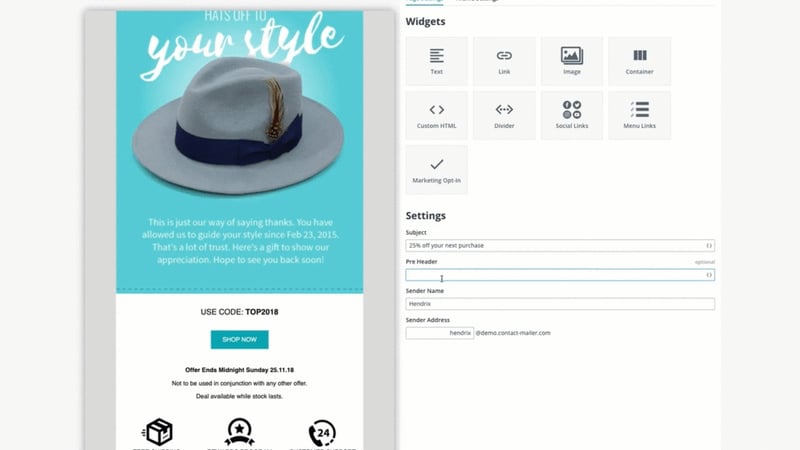6 Tips for Optimizing Your Multichannel Campaign Management Strategy

At Beonic, we’ve got a fantastic team of marketing specialists. Our Marketing Services team works closely with our customers to plan, launch, and optimise engaging multichannel campaigns. So, we thought we’d pick their brains to get a few of their top tips and best practices for effective multichannel campaign management.
6 Tips for Optimizing Your Multichannel Campaign Management Strategy
#1 – Know Your Audience
How your audience interacts with your venues can tell you a lot about their needs, interests and preferences. Using this data to segment your audience, and optimise your messaging is a surefire way to increase engagement and conversion rates.
When planning campaigns, JP Talbot, Beonic's Head of Data and Marketing Services, recommends considering how behavioural data can improve the accuracy of your targeting.
“Behavioural data adds an important layer of context, and allows you to dial in your messaging based on the individual actions and behaviours of your audience.”
– JP Talbot, Head of Data
As part of your multichannel campaign management strategy, consider:
Past visits:
- Reward and retain your most loyal customers and drive visitation from less frequent visitors.
- Re-engage recent visitors, or visitors who were present during a specific event.
- Optimise campaign timing based on visitation patterns (e.g. time of day, or day of the week people typically visit).
Zone Visits:
Segment visitors by the retail categories, amenities, or services they engage with to:
- Drive conversion and visitation with more personalized offers.
- Re-target visitors on digital ad networks with relevant promotions.
- Promote new products, services, and events that match their interests.
#2 – Choose your Send Type (Time)
Timing is critical when it comes to multichannel campaign management. With Engage, you can create two types of campaigns: bulk campaigns (sent immediately, or scheduled for a specific time) and automated campaigns (triggered by the actions and behaviours of your audience).
So, how do you choose when to send your campaign? Ann McCartney, Digital Strategist at Beonic, states, “Consider what the campaign outcome should be and when you need your audience to convert.”
Bulk Campaigns
To reach a wide audience at roughly the same time, use bulk campaigns for:
- Announcements
- Special events
- Supporting retail tenants
- Partner offers
Automated Campaigns
Automated campaigns are great for ongoing campaigns tied to larger goals, or where the added context of your audience’s location and behaviour can increase engagement, including:
- Increasing loyalty
Programmatically re-engage visitors when they haven’t been seen in your venue in a certain amount of time. - Customer feedback
Automatically trigger surveys while visitors are in your venue, or upon exit. - Driving in-venue conversion
Automatically trigger targeted offers and messages to visitors while they are in your venue (known as proximity marketing).
Use automation to streamline workflow, maximise engagement, build customer journeys, and test campaign messaging to different audiences and measure conversion.
#3 – Increase Open Rates with Custom Preheader Text
Preheader text appears directly after your subject line in email inboxes—and it’s often an afterthought. Ann McCartney says the best email campaigns include subject lines and preheader text that work well together.
“Don’t cram too much into your subject lines. Keep them short and snappy, and use custom preheader text to provide more context.” —Ann McCartney, Digital Strategist
Ann also recommends keeping subject lines short and snappy to grab attention, and then customizing your preheader text to further qualify and communicate what your emails are about (see animation below of Beonic's Engage marketing platform).

#4 – CTAs: Focus on Benefits
The call-to-action (CTA) is one of the most important components in your campaign. When done right, they should grab your audience’s attention and drive them to take action. When it comes to messaging for CTAs, McCartney suggests that focusing on the value exchange is a good way to entice your subscribers to act.
Below are a few examples of CTAs for different campaign goals:
- Encourage a Purchase
- Claim Your Coupon Now
- Yes! I want 50% off
- Enrollment in Loyalty / Membership Programs
- Get VIP Status
- Start Earning Rewards
- Collect Customer Feedback
- Help Us Improve Your Experience
- Tell Us How We Did
#5 – Consider The Entire Campaign Journey
Whether you’re sending campaigns over email, SMS, or mobile push notifications via our API, make sure you consider the entire campaign journey. As Ann McCartney mentions, getting your audience to engage with your campaigns is only half the battle. If you want to improve conversion rates, make sure it’s easy for your audience to actually complete the desired action you want them to take.
“Interact with your full campaign, and ensure you have created a streamlined journey from inbox to venue.” —Ann McCartney, Digital Strategist
For example, if your goal is to drive in-store sales through an offer that can be redeemed onsite, consider the following:
- How easy is it for customers to claim the offer?
- Does your messaging clearly communicate how to redeem the offer onsite?
#6 – Build off What Works
Effective multichannel campaign management requires tracking performance across the entire campaign journey. You’ll want to track how well your audience is engaging with campaigns in their inboxes, as well as their impact on visitor behaviour.
“Analysing the performance at each stage in the campaign journey can give you insight into what’s working well, and where you’re falling short.”
Ann McCartney, Digital Strategist
Below are a few tips from Ann on how you can use Beonic's analytics tools to stay on top of campaign performance.
Campaign Metrics
Metrics like opens and click-throughs will give you insight into how effective you are at grabbing your audience’s attention. Keep a close eye on unsubscribes. A high unsubscribe rate could be a clue that you need to adjust your audience segmentation, messaging, or timing to be more relevant.
Behavioural Metrics
Are your campaigns actually driving your audience to act? If you’re using Insight, make sure you’re tracking your campaign segments to understand their impact on in-venue visits, dwell time, and coupon redemption. You can also use report annotations to keep track of marketing activities so you can understand their impact on in-venue behaviour.
Assemble Your Dream Team
Whether you’re new to Beonic, or are one of our valued customers, Beonic's Marketing Services team is here to help. To learn more about how we’re helping our customers with multichannel campaign management, check out our Solutions page or request a demo today.
